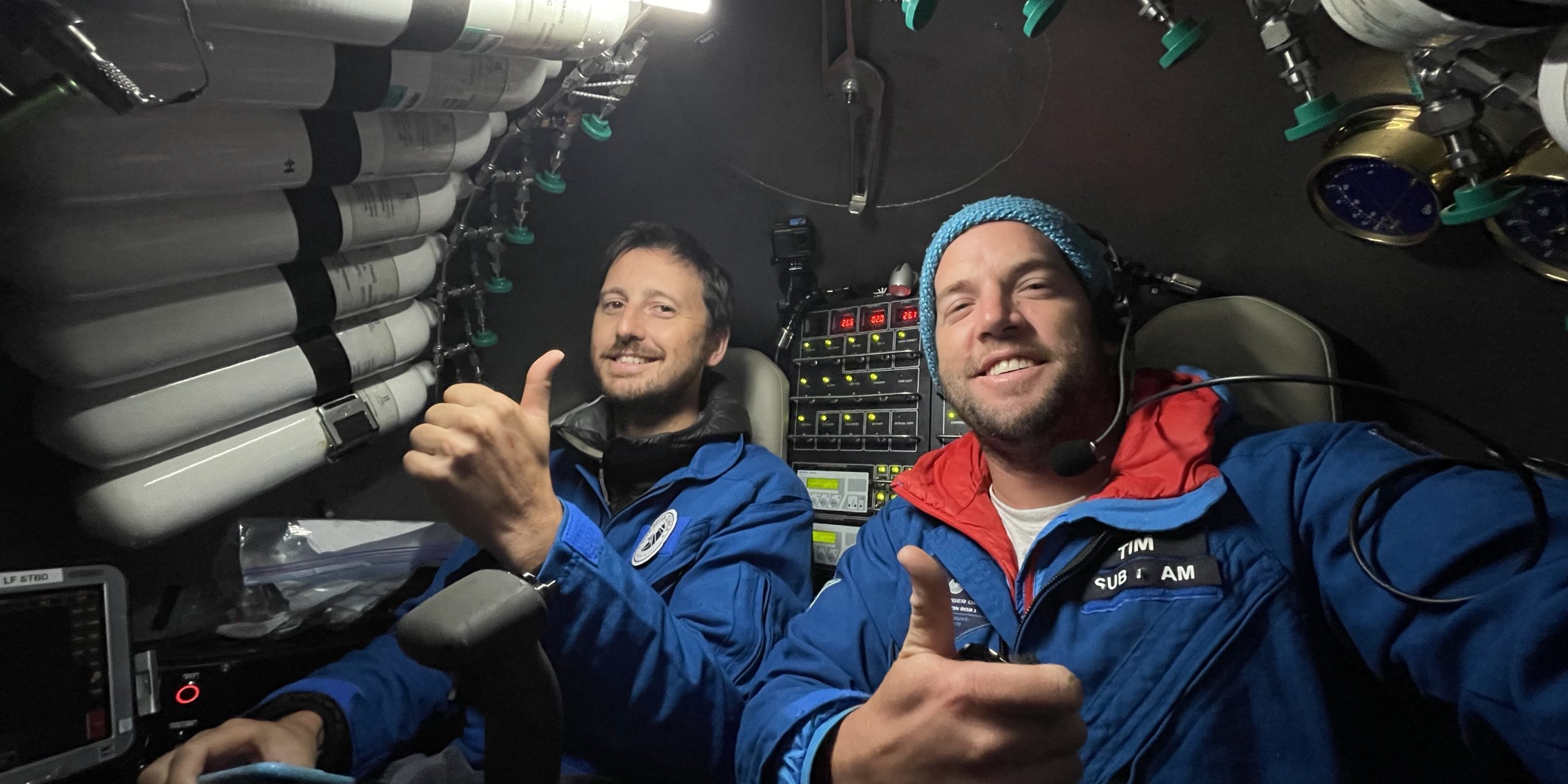DOS provides another high-tech solution for ultra-deep water operations
DOS are pleased to announce that their ultra-deep water sonar system has helped provide their client, Caladan Oceanic and Victor Vescovo with two world records.
In 2021, DOS under the leadership of Nicolas Vincent and his deputy Sébastien Bougant were appointed by Caladan’s CEO Victor Vescovo to supply and integrate the world’s first side scan sonar rated for Full Ocean Depth (FOD.) After a careful process of hyperbaric tests and DNV certifications, the 11,000m rated side scan system was installed on Caladan’s FOD submersible ‘DSV Limiting Factor’.
In June 2022, DOS Survey Engineer Jeremie Morizet was involved in Caladan’s expedition ‘Battle Off Samar Part II’ and performed 7 consecutive dives, from 6,500m to 8,002m (Philippine Trench) as co-pilot and sonar analyst onboard Limiting Factor.
- On the 18th June 2022, sub-pilot Tim Macdonald and Jeremie detected a faint debris field on side scan imagery belonging to the destroyer escort USS Samuel B Roberts, including a characteristic triple torpedo tube.
- On the 22nd June 2022, sub-pilot Victor Vescovo and Jeremie tracked the debris field down to the main wreckage of the ‘Sammy B’, laying in 6,852m. The wreck was severely damaged on the stern and port-side by the shells of Japanese fleet.
- The USS Samuel B. Roberts, ’the escort that fought like a battle ship’, becomes the world’s deepest shipwreck ever found.
The second world record occurred on the 12th July 2022, when the sub fitted with the Side Scan Sonar dived into Challenger deep to a depth of 10,909 meters and became the first Side Scan Sonar ever to operate at this depth and can be definitely rated Full Ocean Depth.
VICTOR VESCOVO:
“I very much appreciate Deep Ocean Search taking on this unique and unprecedented challenge to build the world’s full ocean depth-capable sidescan sonar. Having this new technology and demonstrating it in the field has, as we have demonstrated, opened up new areas and techniques of Hadal research and discovery and we look forward to working with DOS to continue to enhance its capabilities”
We would like to add that this important technological & historical achievement would not have been possible without the dedication of the Limiting Factor ‘Sub-Team’ managed by Hadal Subsea Engineering, the professionalism of the Pressure Drop Crew, EYOS expedition, and GEBCO ‘Map The Gaps’ survey team. The excellent historical work of Parks Stephenson must also be saluted for narrowing the research down to the most relevant area.
We look forward to following this team in their future exploits.









I admire their courage. but I find what they did pointless, except to prove how deep in the ocean you can go. You can accomplish so little compared with what you could accomplish if you spent the same time and money on something that at least “might” give rise to some useful knowledge that had some meaningful awareness that made some difference in some way.
and the current Titan disaster suffers, to me with the same absolute meaninglessness. Pictures of the Titanic in its present state are ALREADY AVAILABLE.
And the present situation is so costly in so many terrible ways, it also seemed excusable that it happen.
Hi Stevens,
Thanks for your message.
This dive campaign on the Samuel B. Roberts was also meant to test a unique side scan sonar fabricated by DOS for Caladan Oceanic and rated for full ocean depth (11000m.) Qualifying such a sensor will allow, in the future, to conduct extended imageries of hadal seabeds and trenches that are, as we speak, almost completely unknown. So the knowledge and the scientific outcomes are huge.
Moreover, on every expedition organised by Victor Vescovo, groups of scientists are joining the mission and get access to the submersible, its sensors and sampling tools as well as a full equipped wet lab… during several weeks, all free of charge! In that perspective, all year long, Victor offer scientists the opportunity to conduct programs they could never dream of or afford!
Best regards,
Jeremie